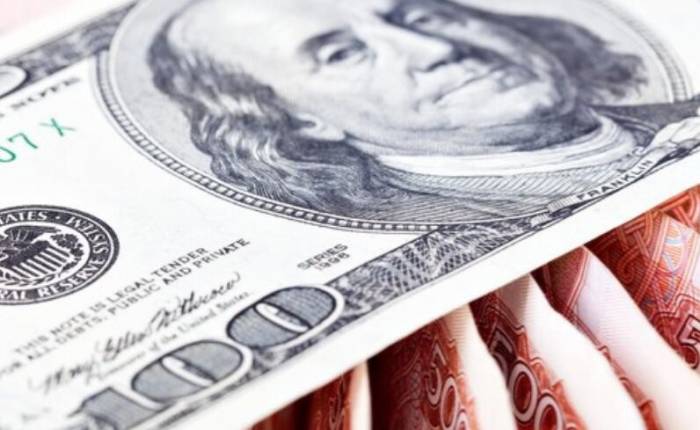Brothers, the U.S. stock market has experienced another massive plunge, with the Dow Jones Industrial Average plummeting by 500 points, the Nasdaq Composite falling over 2%, and the S&P 500 losing 1.4%. NVIDIA, the world's largest semiconductor company, saw a staggering 9.53% drop, wiping out a whopping 2 trillion yuan in a single night, setting a record for the largest single-day loss for a single stock in U.S. stock market history. American investors are starting to get nervous.
What's even more outrageous is that it's not just the U.S. stock market that's collapsing; European stock markets are also plummeting, along with the prices of commodities like gold, silver, copper, and oil, which have all taken a significant nosedive. Someone who doesn't know the details might really think World War III has started.
So, why did this happen?
There are two main reasons:
First, the U.S. economy is in such a dire state that it has far exceeded market expectations. On Tuesday, the Institute for Supply Management released a report stating that U.S. manufacturing activity in August was below expectations, with the ISM Manufacturing Index at a mere 47.2%, lower than the market's anticipated 47.9%. I know some of you might not understand this index, but let me put it in layman's terms: this indicator represents the willingness of American companies to expand production. The higher the number, the more vibrant the U.S. economy. However, if the number is below 50%, or even as low as 47.2%, it indicates that the majority of American companies are laying off employees and downsizing, which means the U.S. economy is at risk of contraction. Typically, before a major depression or economic crisis, the U.S. would see this number plummeting below expectations. So, once this number was announced, everyone understood the state of the U.S. economy.
Advertisement
It's not just this data that's concerning; the S&P Global Manufacturing PMI for the U.S. in August was also significantly below market expectations. What does this number represent? It means that U.S. manufacturing is lacking new orders, with a large amount of inventory piling up in warehouses. This number is a good reference for predicting the trend of the U.S. economy. Therefore, many international market investors now believe that the U.S. economy may face a recession in the second half of this year, which is why everyone is rushing to cash out before the U.S. stock market crashes, leading to the massive plunge.
Of course, in addition to the U.S.'s own issues, there is also a part of the reason that lies with Japan.
Second, the Bank of Japan has once again signaled the possibility of raising interest rates.
I know many people don't understand, is Japan that powerful? Can their financial policies actually affect the United States? In fact, it's not about Japan being powerful, but rather Japan's unique position in the international financial market.Everyone is aware that Japan has had a long-term zero interest rate policy. Wall Street capital can borrow money from Japan almost cost-free, hence many financial giants would borrow from Japan and then invest in the United States to earn the interest rate difference.
Let me illustrate with an example. Suppose the current interest rate in Japan is 0%, and in the United States, it's 5.5%. If you borrow 10 billion yen from Japan and invest it in the U.S., after one year, you would receive 10.55 billion yen in principal and interest, earning a profit of 0.55 billion yen.
Doesn't seem like much, right? The reason it appears small is that I deliberately didn't mention the impact of exchange rates. In reality, when you borrow 10 billion yen in Japan, the exchange rate might be 1 USD to 100 JPY. However, by the time you repay, the exchange rate could have shifted to 1 USD to 200 JPY, with the yen losing half its value. This means that the 10 billion yen you borrowed, which initially could be exchanged for 100 million USD, would grow to 105.5 million USD at a 5.5% interest rate after a year. When converted back to yen, it would amount to 211 billion yen. After repaying the original 10 billion, you would make a staggering profit of 110 billion yen.
Do you see now? This is how American capital typically exploits Japan. In the past, Japan could only swallow its anger but not voice it. However, recent significant changes have occurred in Japanese politics, with Fumio Kishida likely to step down soon. Perhaps since he's about to leave office, he's decided to let loose, and in the past month, Japan has been making consecutive moves.
First, at the beginning of August, they raised interest rates, causing the U.S. stock market to crash.
Then, recently, they've hinted at another rate hike, which has scared a lot of capital into fleeing the U.S., leading to another stock market crash.

The logic is quite simple, as I mentioned earlier. Wall Street capital wants to profit from Japan, so they must create a currency exchange rate difference to devalue the yen, providing room for operation. However, every time Japan raises interest rates, it usually triggers a significant appreciation of the yen. If the appreciation exceeds 5.5%, it means that Wall Street capital not only fails to profit from Japan but may even lose money.
So, every time Japan hints at raising interest rates, it prompts many to take their investments out of the U.S. and repay Japan to avoid risk. Consequently, when a large amount of capital flees, the U.S. stock market inevitably falls, which is the basic logic at play.
To be frank, every second half of the year brings many significant events, especially this year, with the U.S. elections and Japan's political transition. These major events will profoundly impact the international landscape. What we see now is just the tip of the iceberg; the real drama may have just begun.
Leave A Comment